Sometimes it feels great to just let go.
To stop striving and trying to control everything and just give in to your impulses.
You know…to just “be human” now and then.
When it comes to dieting, we all know what that means: ignoring the plan and “cheating.”
No counting calories. No estimating macros. And no worrying about what you are and aren’t “supposed” to eat.
There are quite a few opinions on cheating.
Some people believe that even mild deviations from your diet plan can prevent you from reaching your goals.
Others are of the mind that you can stray so long as you don’t turn to certain forbidden foods.
Others still just throw caution to the wind and gorge on anything and everything their hungry little hearts desire.
All of these people are misguided.
You certainly can have “cheat meals” without ruining your progress and you don’t have to stick to a short list of “approved” foods, but you can’t eat yourself unconscious every week without paying a price.
And that’s what this article is going to be all about:
How to get maximum enjoyment out of your cheat meals while simultaneously minimizing the downsides.
In fact, when done correctly, cheating can ultimately make it easier to stick to your diet and see results.
Yes, you can have your cake and eat it too. 🙂
Let’s find out how…
Want to listen to more stuff like this? Check out my podcast!
The Truth About “Cheat Meals”
When I talk about a cheat meal, I’m not talking about eating sugar or dairy or some other food deemed “unclean” by one guru or another.
I’m not even necessarily talking about eating something not on your meal plan.
All I care about is caloric and micronutritional intake because when it comes to body composition, how much you eat is much more important than what you eat.
[Read: How to Get the Body You Want With Flexible Dieting]
“Cheating” is eating more calories than you planned on eating, regardless of what you eat to get there, and/or not worrying about the nutritional content of the food.
That is, cheating consists of eating a lot more food than you normally would and/or disregarding nutrition.
For example, if you ate according to plan throughout the day but ended with a high-calorie blowout at your favorite restaurant, that’s cheating.
No surprise there. That’s the type of cheating that gets most people into trouble.
Another form of cheating, though, is (more or less) sticking to your calories and macros but ignoring nutrition.
For example, if you skip the fruit, veggies, and whole grains for a day to fit fast food into your macros, that’s cheating.
The reason being is: doing this occasionally won’t get in the way of anything, but doing it too frequently can give rise to micronutrient deficiencies.
(And your goal shouldn’t be to lose fat and build muscle as unhealthily as possible.)


The 5 Biggest Cheat Meal Mistakes You Can Make
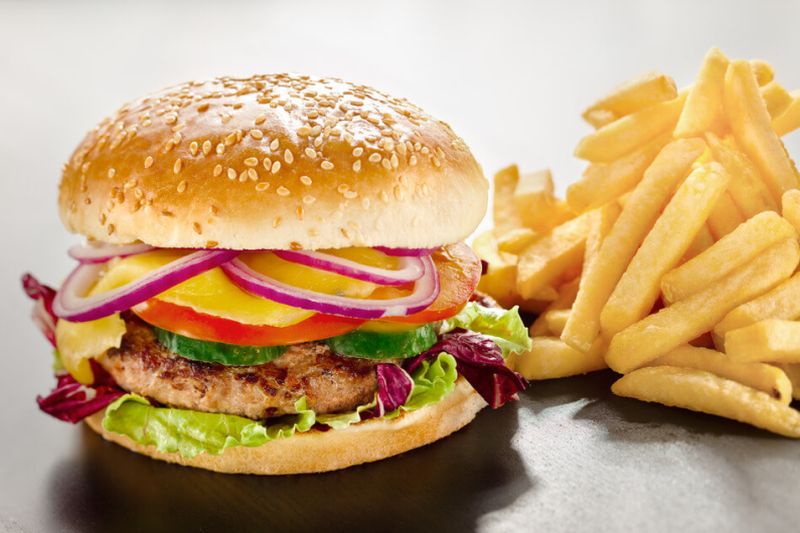
Cheating itself is not a mistake.
In fact, I think you should cheat.
It makes your diet as a whole more enjoyable and generally improves dietary compliance and thus long-term results.
That said, how you cheat matters.
For example, the biggest mistakes I see people make with cheating are…
- Cheating too frequently.
- Eating too much in a cheat meal.
- Indulging in cheat days, not meals.
- Eating too much dietary fat.
- Drinking too much alcohol.
Let’s take a closer look at each and learn why they’re so detrimental.
1. Having Too Many Cheat Meals
This one is pretty self explanatory.
Cheating involves overeating so cheating too frequently erases large portions of your caloric deficit required for sustained fat loss.
2. Eating Too Much in a Cheat Meal
Many people don’t realize how many calories are in the foods they eat in their cheat meals.
And many are shocked when they look it up.
One of the big problems here is restaurants, because their job is the produce delicious food, and that means copious amounts of oil, butter, and sugar.
This helps explain research conducted by scientists at Tufts University that involved the analysis of 360 dinner entrees at 123 non-chain restaurants in San Francisco, Boston, and Little Rock between 2011 and 2014.
They found that the restaurant dishes contained 1,200 calories, on average, and that American, Italian, and Chinese restaurants were the worst offenders, with an average of nearly 1,500 calories per meal.
That agrees with another study conducted by researchers at the University of Illinois that concluded that, calorically speaking, there’s not much of a difference between fast food and full-service dining.
Even more staggering is a 2014 analysis of restaurant foods from the Center for Science in the Public Interest.
The Cheesecake Factory, for example, makes a “bruléed French toast” with a side of bacon that weighs in at 2,780 calories, 93 grams of saturated fat, and 8 tablespoons of sugar.
They also offer a creamy farfalle pasta with chicken and roasted garlic, which is a bit lighter at “just” 2,410 calories and 63 grams of saturated fat.
[Read: How Many Calories You Should Eat (with a Calculator)]
Let’s also not forget that those are just individual entrees, which, for many people, aren’t the entirety of their eats.
Add in calories for bread, an appetizer (or two), and a bit of dessert, and you’re looking at a cheat meal of monolithic proportions.
So, this point is this:
If you eat out frequently, you’re probably going to struggle to lose weight.
3. Indulging in Cheat Days, Not Meals
Many people like to believe that being “good” during the week allows them to go buck wild on the weekends.
Wishful thinking.
If you can go a few thousand calories into the hole in just one trip to your favorite restaurant, you can only imagine just how deep you can dig your dietary grave in a couple of days.
4. Eating Too Much Dietary Fat
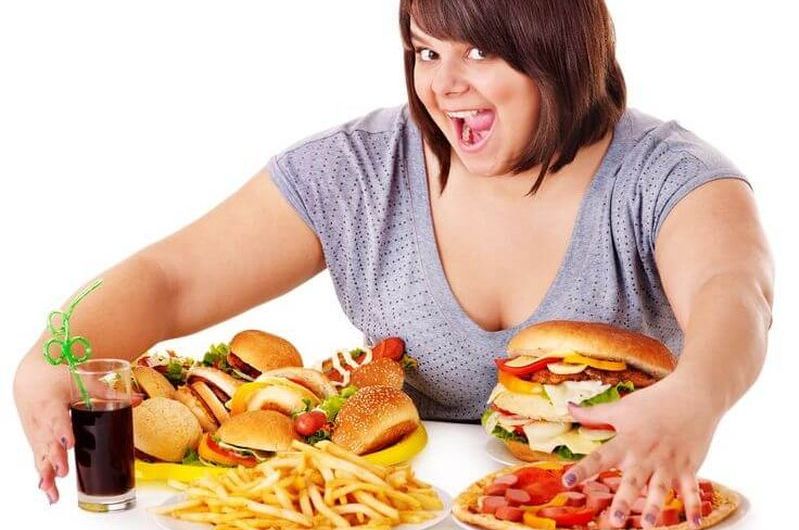
Many people think that eating large amounts of carbs is the surest way to gain fat, but they’re wrong.
If you want to gain fat as quickly and efficiently as possible when overeating, you want to eat large amounts of dietary fat.
(And you want to add alcohol into the mix too, but we’ll talk more about that in a minute.)
To understand why this is, we have to look at the physiology of how your body increases its fat stores.
Chemically speaking, carbs are very different than the types of molecules stored in body fat cells (lipids), and the process whereby carbs are converted into body fat is known as de novo lipogenesis (DNL).
And the first thing you need to know about DNL is it rarely occurs under normal dietary conditions.
When you review overfeeding studies, you find that carb intake has to be absolutely sky-high (700 to 900 grams per day for several days for DNL to contribute significantly to fat mass.
There are exceptions, such as very large infusions of pure glucose (150% of TDEE) and people with hyperinsulinemia, but the above holds in healthy individuals following a normal type of diet.
That isn’t to say that you can’t gain fat by eating too many carbs, though. You can.
The primary reason for this is eating carbs reduces fat oxidation. In other words, it tells your body to stop burning fat for energy and start burning carbs instead.
That means that when you eat carbs, more or less all of the dietary fat that you eat will be stored as body fat (as opposed to being at least partially burned for energy).
And as your body fat mass is regulated by energy balance (the balance between the amount of fat burned versus stored every day), you can probably see how carbs play into this:
Eat a lot of carbs and you’ll store most of the fat you eat and burn very little body fat throughout the day.
Now, if a lightbulb just went off in your head about “hacking” your metabolism by eating a diet very high in carbs and very, very low in fats…not so fast.
Not only would that be bad for your health, research shows that when dietary fat intake is too low, DNL ramps up to provide the body with vital triglycerides.
Our bodies are far smarter than we often think. 🙂
Remember that all this doesn’t negate or trump the laws of energy balance.
If you’re in a calorie deficit, regardless of how much or little carbs or fat you eat, you will lose fat. And if you’re in a surplus, you will get fatter.
My point here is just to enlighten you on how these macronutrients directly affect the physiology of fat burning and storage and how we can apply that knowledge to individual (cheat) meals.
5. Drinking Too Much Alcohol
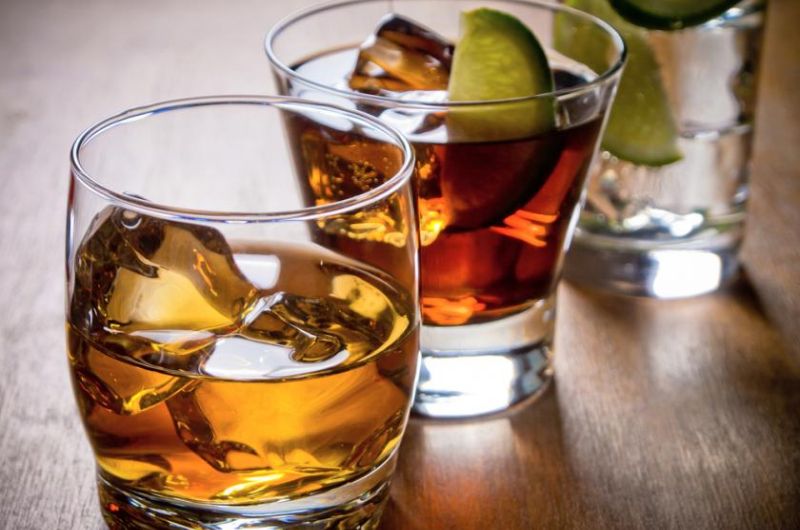
According to some people, if you drink even lightly and sporadically, you’re going to get and stay fat—end of story.
This is an odd statement considering the fact that moderate alcohol consumption is actually associated with lower body weights, not higher.
That sounds blasphemous, I know, but as in the case of eating carbs vs. fats, it starts to make sense when we peek beneath the hood and look at the physiological processes in play.
Let’s start with a study that involved the analysis of the diets of 1,944 adults aged 18 to 74 and that found that an increase in calories from ethanol (alcohol) alone didn’t result in the weight gain that would normally occur if those calories were from protein, carbs, or fat.
In fact, thanks to regular alcohol intake, drinkers took in an average of 16% more calories each day than non-drinkers, and had the same levels of physical activity, but weren’t any fatter than their alcohol-free counterparts.
It’s almost as if the calories from the alcohol simply “didn’t count.”
A similar effect was seen in a study conducted with obese women on a weight loss diet wherein one group got 10% of their daily calories from white wine, and another from grape juice.
After 3 months, the white wine group lost about 2 pounds more than the grape juice group.
There are several likely reasons for these findings.
It’s known that alcohol can reduce your appetite, which is conducive to weight loss, of course, and improve insulin sensitivity, which has positive trickle-down effects on fat oxidation.
More importantly, though, is the simple fact that alcohol itself basically can’t be stored as body fat.
In other words, there’s basically no way for your body to convert ethanol into a lipid that can be stored.
Why, then, am I saying it’s a mistake to drink alcohol with a cheat meal?
Well, similar to carbs, alcohol blocks fat oxidation, which in turn accelerates the rate at which dietary fat you’ve eaten is stored as body fat.
In short, it’s not the calories from alcohol that can make you fat, but all the crap that you eat with it, which is hard to resist when you’re hammered.
How to Enjoy Cheat Meals Without Ruining Your Diet
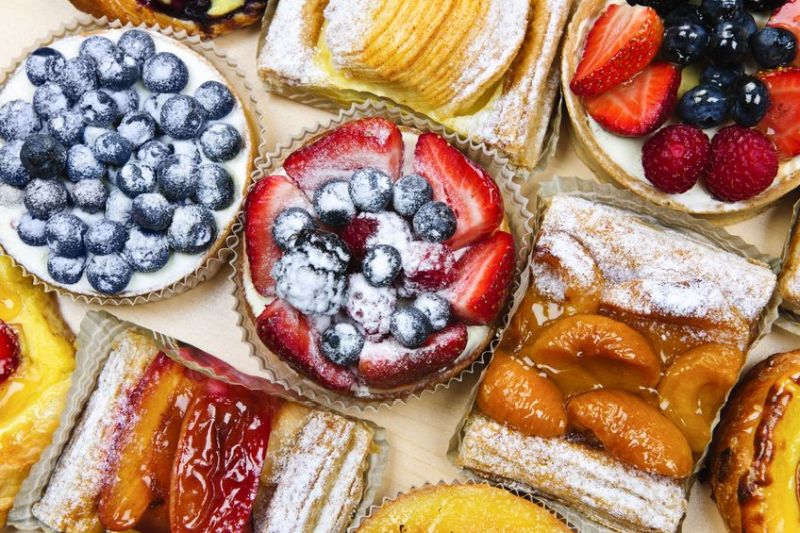
Now that you know what you’re not supposed to do when you cheat, let’s look at how to do it right.
Here’s how it breaks down:
Cheat once per week and try not to exceed 150% of your current caloric intake for the day.
This allows you to loosen up and enjoy yourself without losing most or all of the week’s weight loss progress.
(And notice I said current caloric intake and not TDEE.)
However you get your calories in terms of meal frequency is up to you, but most people like to confine their cheating to just one meal because it helps prevent passive overeating throughout the day.
In other words, they eat normally throughout for the day and have one larger-than-normal meal (dinner, usually).
Try to keep your dietary fat intake under 100 grams on the day that you cheat.
This not only helps keep your calories under control (remember that a gram of fat contains about 9 calories), it also helps minimize fat storage (a pound contains 453 grams).
[Read: How Many Grams of Fat Should You Eat Per Day?]
Instead of doubling down on your favorite fatty foods, go high-carb instead.
Research clearly shows that a high-carb meal causes less immediate fat gain than a high-fat meal, and you now know why.
Hence my recommendation of going high-carb and not high-fat when you cheat, which results in less immediate fat gain and has other benefits as well.
One of the downsides of keeping your body in a caloric deficit is it reduces the plasma (blood) levels of a hormone called leptin, which is produced by body fat.
In simple terms, leptin tells your brain that you have enough energy stored in your fat cells and that your body can expend energy at normal rates, including metabolically “expensive” functions like muscle growth or pregnancy, eat normal amounts of food, and engage in normal levels of physical activity.
If you restrict your calories to lose fat, leptin production decreases, which tells your body that it’s in an energy deficient state and that it needs to expend less energy and consume more.
It accomplishes this through several mechanisms: reduction of basal metabolic rate and non-exercise activity, and stimulation of hunger, to name a few.
Raising your leptin levels reverses these effects, of course, which is why you feel better when you stop restricting your calories.
[Read: The Definitive Guide to Leptin and Weight Loss]
This is why some people recommend that you “cycle” your calories high and low throughout the week, being in a deficit on some days and at maintenance on others.
That’s one way to deal with some of the negative side effects associated with dieting, but I don’t like that it can really drag out the entire weight loss process.
If you eat maintenance calories just 3 days per week you’re looking at almost doubling the time it will take to reach your goal.
Instead, I prefer the “refeed” strategy, which entails eating a large amount of carbs once per week (when you cheat).
The reason this works well is, as you know, carbs don’t heavily impact fat stores, and they also spike leptin levels (more so than protein or fat).
“Save up” calories if you want to eat a lot.
If you’re like me and like to eat a couple thousand calories in a cheat meal, I have a simple tip for you:
“Save up” calories for it by eating more or less nothing but protein leading up to (or after) it.
For example, my cheat meals are almost always dinners, so I eat a serving of protein every few hours but skip the carbs and fats that I would have normally eaten.
This way, when I get to dinner, I have a large buffer of carbs and fat (and thus calories) before I even hit maintenance calories for the day.
When I cheat at breakfast, the strategy is the same: I eat my entire day’s worth of carbs and fats in that one meal and just have protein from there on out.
When eating out, assume the worst.
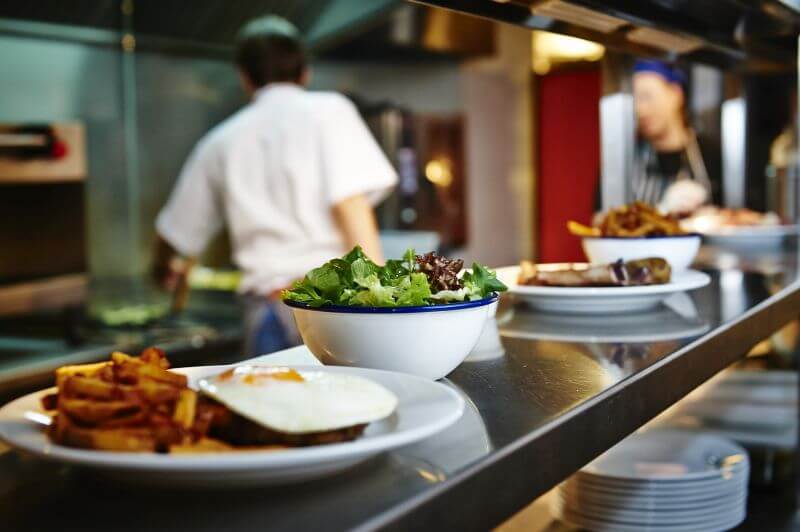
That’s just the long and short of it.
For example, a palm-sized piece of meat cooked in a restaurant usually has at least another 120 to 150 calories of fat that has absorbed during cooking.
A cup of pasta or potatoes would range from 180 to 200 calories but if there’s a sauce or other source of fat, that can easily double.
Even vegetable dishes can contain large amounts of “hidden calories” in the form of high-fat additions like butter, oil, and cheese.
As for desserts, well, a good rule of thumb is most contain anywhere from 25 to 50 calories per tablespoon.
So, the point here is you have to watch what you order when you eat out. It doesn’t take much put down a few thousand calories in that one meal.
The first step, then, is familiarizing yourself with the types of foods you like to eat when you dine out.
You can do that on a website like Calorie King, which has an entry for just about any type of dish you could want to eat.
If you’re eating at a chain restaurant, the exact meal might be listed (Olive Garden fettuccine alfredo, for example, which is listed at 1219 calories with 75 grams of fat and 47 grams of saturated fat).
When it is, I recommend that you add 20% to those posted calories (many restaurants underreport actual calories in meals).
If that restaurant’s version of the dish isn’t listed, search for it on Calorie King and look for “Average All Brands.”
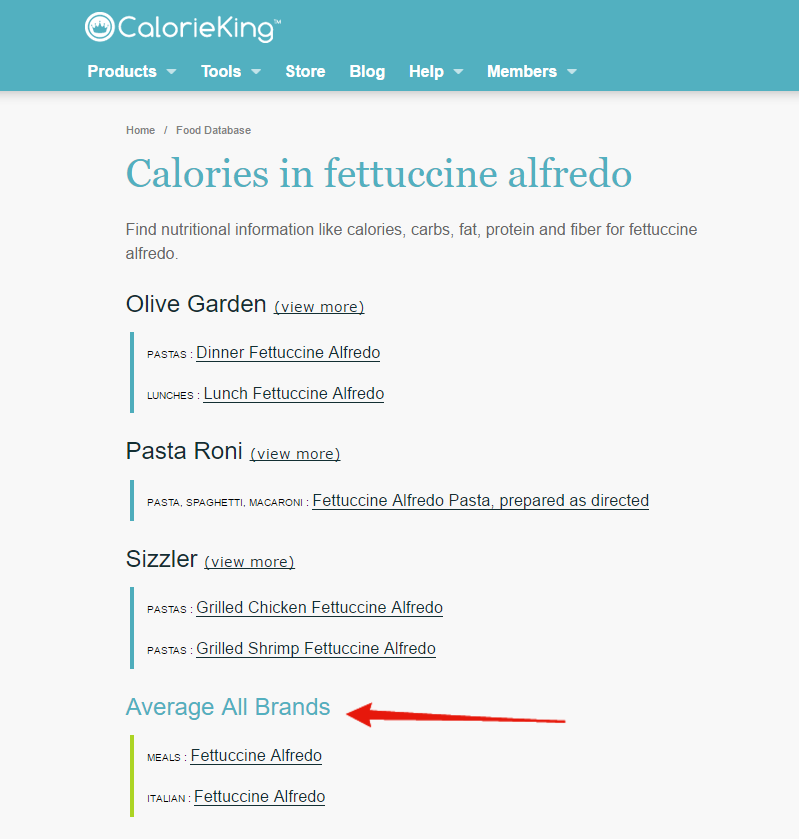
If it’s there, add 20% to the calories.
And if there’s no average for all brands, take a look at a handful of the entries and choose a number in the middle and, again, add 20% to it.
This might sound like quite a bit of work and hassle, but it’s really not, and the more you do it, the easier it gets.
And the point isn’t to track every calorie you eat in your cheat meals, of course, but just to avoid feasting away the previous week’s progress.
If you want to be able to drink and still lose weight efficiently…
- Don’t drink more than one day per week.
- Restrict your dietary fat intake that day.
- Don’t eat any high-fat foods while you’re drinking.
- Stay away from carb-laden drinks like beer and fruity stuff (stick to dry wines and spirits).
It’s that simple.
The Bottom Line
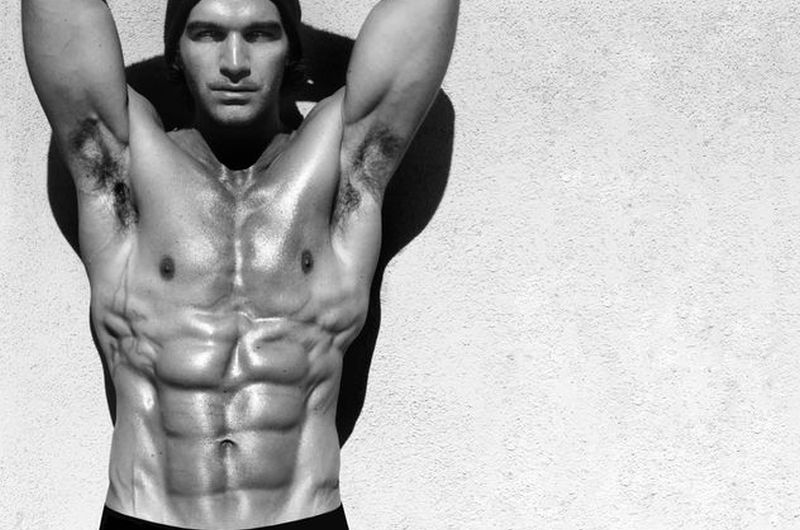
Cheating incorrectly is one of the major reasons so many people “inexplicably” can’t lose weight “no matter what they do” with their diets.
They simply don’t realize that you can basically starve yourself all week and, in one weekend, put yourself right back at square zero.
Cheat correctly, though, and you can have the best of both worlds: the satisfaction of overeating without the penalty of major fat gain.
Enjoy!
What’s your take on cheat meals? Have anything else to share? Let me know in the comments below!
+ Scientific References
- Urban LE, Weber JL, Heyman MB, et al. Energy Contents of Frequently Ordered Restaurant Meals and Comparison with Human Energy Requirements and U.S. Department of Agriculture Database Information: A Multisite Randomized Study. J Acad Nutr Diet. 2016;116(4):590-8.e6. doi:10.1016/j.jand.2015.11.009
- Dirlewanger M, di Vetta V, Guenat E, et al. Effects of short-term carbohydrate or fat overfeeding on energy expenditure and plasma leptin concentrations in healthy female subjects. Int J Obes Relat Metab Disord. 2000;24(11):1413-1418. http://www.ncbi.nlm.nih.gov/pubmed/11126336. Accessed September 29, 2019.
- Park H-K, Ahima RS. Physiology of leptin: energy homeostasis, neuroendocrine function and metabolism. Metabolism. 2015;64(1):24-34. doi:10.1016/j.metabol.2014.08.004
- Jéquier E. Leptin signaling, adiposity, and energy balance. Ann N Y Acad Sci. 2002;967:379-388. doi:10.1111/j.1749-6632.2002.tb04293.x
- Horton TJ, Drougas H, Brachey A, Reed GW, Peters JC, Hill JO. Fat and carbohydrate overfeeding in humans: different effects on energy storage. Am J Clin Nutr. 1995;62(1):19-29. doi:10.1093/ajcn/62.1.19
- Shelmet JJ, Reichard GA, Skutches CL, Hoeldtke RD, Owen OE, Boden G. Ethanol causes acute inhibition of carbohydrate, fat, and protein oxidation and insulin resistance. J Clin Invest. 1988;81(4):1137-1145. doi:10.1172/JCI113428
- Siler SQ, Neese RA, Hellerstein MK. De novo lipogenesis, lipid kinetics, and whole-body lipid balances in humans after acute alcohol consumption. Am J Clin Nutr. 1999;70(5):928-936. doi:10.1093/ajcn/70.5.928
- Ukropcova B, McNeil M, Sereda O, et al. Dynamic changes in fat oxidation in human primary myocytes mirror metabolic characteristics of the donor. J Clin Invest. 2005;115(7):1934-1941. doi:10.1172/JCI24332
- McCarty MF. Does regular ethanol consumption promote insulin sensitivity and leanness by stimulating AMP-activated protein kinase? Med Hypotheses. 2001;57(3):405-407. doi:10.1054/mehy.2001.1404
- Kokavec A. Is decreased appetite for food a physiological consequence of alcohol consumption? Appetite. 2008;51(2):233-243. doi:10.1016/j.appet.2008.03.011
- Flechtner-Mors M, Biesalski HK, Jenkinson CP, Adler G, Ditschuneit HH. Effects of moderate consumption of white wine on weight loss in overweight and obese subjects. Int J Obes Relat Metab Disord. 2004;28(11):1420-1426. doi:10.1038/sj.ijo.0802786
- Gruchow HW, Sobocinski KA, Barboriak JJ, Scheller JG. Alcohol consumption, nutrient intake and relative body weight among US adults. Am J Clin Nutr. 1985;42(2):289-295. doi:10.1093/ajcn/42.2.289
- Yeomans MR. Alcohol, appetite and energy balance: is alcohol intake a risk factor for obesity? Physiol Behav. 2010;100(1):82-89. doi:10.1016/j.physbeh.2010.01.012
- Schwarz J-M, Linfoot P, Dare D, Aghajanian K. Hepatic de novo lipogenesis in normoinsulinemic and hyperinsulinemic subjects consuming high-fat, low-carbohydrate and low-fat, high-carbohydrate isoenergetic diets. Am J Clin Nutr. 2003;77(1):43-50. doi:10.1093/ajcn/77.1.43
- Acheson KJ, Flatt JP, Jéquier E. Glycogen synthesis versus lipogenesis after a 500 gram carbohydrate meal in man. Metabolism. 1982;31(12):1234-1240. doi:10.1016/0026-0495(82)90010-5
- Aarsland A, Chinkes D, Wolfe RR. Contributions of de novo synthesis of fatty acids to total VLDL-triglyceride secretion during prolonged hyperglycemia/hyperinsulinemia in normal man. J Clin Invest. 1996;98(9):2008-2017. doi:10.1172/JCI119005
- McDevitt RM, Bott SJ, Harding M, Coward WA, Bluck LJ, Prentice AM. De novo lipogenesis during controlled overfeeding with sucrose or glucose in lean and obese women. Am J Clin Nutr. 2001;74(6):737-746. doi:10.1093/ajcn/74.6.737
- Acheson KJ, Schutz Y, Bessard T, Anantharaman K, Flatt JP, Jéquier E. Glycogen storage capacity and de novo lipogenesis during massive carbohydrate overfeeding in man. Am J Clin Nutr. 1988;48(2):240-247. doi:10.1093/ajcn/48.2.240
- An R. Fast-food and full-service restaurant consumption and daily energy and nutrient intakes in US adults. Eur J Clin Nutr. 2016;70(1):97-103. doi:10.1038/ejcn.2015.104
- Urban LE, Weber JL, Heyman MB, et al. Energy Contents of Frequently Ordered Restaurant Meals and Comparison with Human Energy Requirements and US Department of Agriculture Database Information: A Multisite Randomized Study. J Acad Nutr Diet. 2016;116(4):590-598.e6. doi:10.1016/j.jand.2015.11.009









